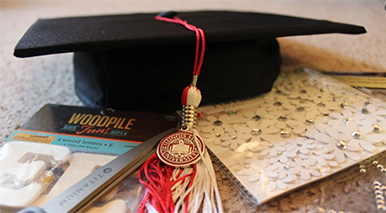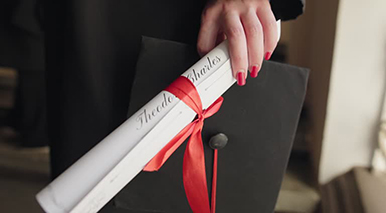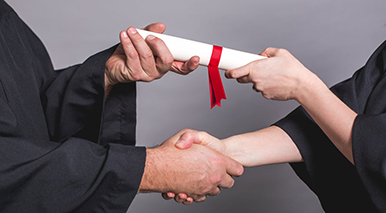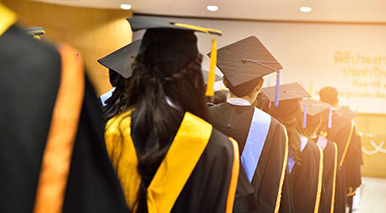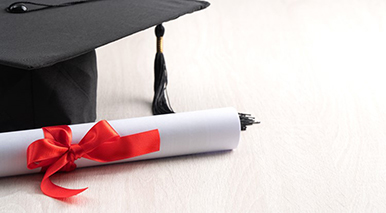
In today’s fast-paced and competitive world, academic credentials carry immense value. They serve as the foundation upon which jobs are secured, promotions are earned, and credibility is built. However, this reliance on diplomas and degrees has also given rise to an alarming trend—diploma fake. Numerous individuals and diploma mills exploit the demand for educational certificates by offering counterfeit diplomas that mimic legitimate ones. While these fake documents may look convincing at first glance, they fail to stand up to scrutiny, often leaving employers, academic institutions, and the individuals involved to deal with costly repercussions.
The ability to distinguish between fake and real diplomas has never been more critical. For employers, hiring someone with fraudulent credentials can lead to performance issues, legal trouble, and reputational damage. For academic institutions, fake diplomas risk undermining the integrity of their programs. And for individuals, the act of using fake documents can have career-ending consequences.
In this guide, we’ll take an in-depth look at the growing problem of fake diplomas, the tools and techniques for verifying their authenticity, and why proper verification is essential for maintaining trust in both education and professional environments.
What Are Fake Diplomas?
Fake diplomas are counterfeit educational documents created to simulate the appearance of legitimate credentials. They are often sold by diploma mills or fraudulent websites that claim to grant degrees without any need for coursework, exams, or academic effort.
Characteristics of Fake Diplomas
- No Legitimate Accreditation: Fake diplomas are usually issued by non-existent or unaccredited institutions.
- Similar Visual Appearance: Many fake diplomas are designed to replicate the format, seals, logos, and signatures found on real certificates.
- No Verifiable Academic Record: A fake diploma will not have corresponding transcripts or academic records.
- Irregular Content: Fake diplomas often include typos, formatting errors, or inconsistent terminology.
Given their convincing designs, fake diplomas can be difficult to identify without thorough verification.
Why Verification Is Important
Diploma verification is crucial in both academia and the professional world. Confirming the authenticity of a diploma ensures that individuals meet the qualifications required for their roles, preserving trust and accountability. Here are key reasons why verification is necessary:
1. Maintaining Integrity
Verification safeguards the integrity of hiring, promotion, and admissions processes by ensuring that only genuinely qualified candidates are selected.
2. Protecting Organizations
Employing or admitting someone with fake credentials can harm an institution’s reputation, lead to poor job performance, or even expose the organization to legal liability.
3. Fairness
Verification ensures that deserving candidates who have worked hard to earn their diplomas are not overshadowed by unethical individuals using counterfeit documents.
4. Preventing Fraud
As the market for fake credentials grows, verification acts as a deterrent to fraudulent behavior.
How to Verify Diplomas
Fortunately, there are concrete steps and methods to verify diplomas and ensure credibility. This section outlines both conventional and modern tools for determining whether a diploma is authentic or fake.
1. Cross-Check the Issuing Institution
The first step in verifying a diploma is examining the institution that issued the document. Fake diplomas are often issued by entities that sound legitimate but do not actually exist as accredited institutions.
Steps to Cross-Check an Institution
- Research the Institution: Look up the school’s name online to ensure it’s a recognized and accredited educational organization.
- Check Accreditation Status: Verify whether the institution is accredited by legitimate accrediting bodies in its country. In the U.S., organizations such as the Department of Education and CHEA (Council for Higher Education Accreditation) maintain lists of accredited schools.
- Contact the School: Reach out to the institution to confirm if the diploma matches their records.
2. Examine the Details of the Diploma
Carefully inspecting the physical diploma can reveal significant red flags. Fake diplomas often include errors, inconsistencies, or unusual features.
What to Look For
- Seals and Logos: Genuine diplomas usually feature embossed seals or professionally printed logos that are difficult to replicate. Fake diplomas may use low-quality designs or incorrect logos.
- Authenticity Features: Many real diplomas now include security features like watermarks, holographic materials, or barcode systems, which fake documents typically lack.
- Language and Terminology: Check for typos, poor grammar, or inconsistencies in terminology—for example, using “Bachelor of Arts Degree” instead of “Bachelor of Arts.”
- Signatures: Verify whether the signatures of school officials align with genuine designs from the institution.
3. Review the Associated Transcripts
A real diploma is often accompanied by academic transcripts that show the courses completed and grades earned. These transcripts can provide valuable clues about the legitimacy of the diploma.
How Transcripts Aid Verification
- Course Listings: Check whether the courses listed align with the curriculum offered by the institution.
- Consistent Grades: Look for discrepancies or inconsistencies in the grading system or term structure.
- Verification by Institution: Contact the institution and request confirmation of the transcript alongside the diploma.
4. Use Online Verification Systems
Many schools and universities now use online verification systems that allow employers, academic institutions, or even individuals to confirm their credentials.
Steps to Use Online Systems
- Search for a Credential Verification Portal: Many accredited institutions have platforms where diploma authenticity can be checked.
- Enter Verification Information: Input the information on the diploma, such as the recipient’s name, degree earned, and graduation date.
- Confirm Results: If the credentials are valid, the system will confirm their authenticity.
5. Consult External Credential Verification Services
Third-party organizations specialize in credential verification for educational and employment purposes. These firms work with schools and regulatory bodies to confirm the legitimacy of diplomas.
Benefits of Using Credential Verification Services
- Professional Expertise: These services have experience identifying fake documents.
- Broader Reach: Verification firms often have access to international resources for checking foreign credentials.
- Time Efficiency: Outsourcing verification saves time and ensures accuracy.
6. Use Modern Technology
As the problem of fake diplomas grows, technology is emerging as an invaluable resource for verification. Blockchain certification systems are increasingly being used by schools to prevent fraud and enable easy verification.
Blockchain Technology in Verification
- Digital Records: Blockchain systems provide tamper-proof, digital educational records alongside physical diplomas.
- Instant Verification: Diploma fake holders can share encrypted links with employers, allowing them to confirm legitimacy in seconds.
- Future-Proofing: Blockchain-based diplomas prevent forgery and enhance trust in educational credentials.
7. Contact Professional Associations or Licensing Boards
If the diploma is being used for professional licensing (e.g., medical or legal professions), reaching out to licensing boards or associations can help confirm whether the qualification is genuine and valid.
Steps to Verify via Licensing Bodies
- Provide Details: Share the recipient’s name, graduation year, and other details listed on the diploma.
- Compare Records: Licensing bodies typically maintain databases of certified professionals and their credentials.
Common Red Flags for Fake Diplomas
Knowing the key indicators of diploma fake can help you spot them right away. Look out for the following red flags:
- Misspelled Words: Errors in spelling or grammar are common in counterfeit diplomas.
- Generic Design: Fake diplomas often lack the visual complexity of real ones, featuring generic fonts or overly simple layouts.
- Unusual Accreditation Claims: Diplomas from “internationally accredited” or unsupported organizations often indicate forgery.
- No Contact Information: Fake institutions often provide websites or email addresses that cannot be traced or are defunct.
Why Fake Diplomas Are a Growing Problem
The rise in fake diplomas can be attributed to the accessibility of online diploma mills and increased pressure for credentials in the job market. According to studies, thousands of fake degrees are sold or used every year, affecting industries worldwide.
Industries Most Affected
- Healthcare: Fake credentials in medicine can lead to disastrous consequences for patient care.
- Engineering: Fraudulent diplomas in technical fields jeopardize safety and quality standards.
- Corporate Offices: Hiring managers must grapple with the risk of employing unqualified individuals who falsely claim degrees.
Conclusion
In a world where qualifications are key to success, knowing how to differentiate between diploma fake and real diplomas is essential. Whether you’re an employer, an academic institution, or an individual seeking opportunities, proper verification ensures trust, fairness, and quality in professional and educational settings. By researching institutions, inspecting physical certificates, leveraging modern verification systems, and consulting credential verification services, you can reliably confirm the authenticity of diplomas.
Fake diplomas might seem like a shortcut for some, but they ultimately tarnish reputations, disrupt progress, and compromise integrity. By prioritizing true educational achievements and verifying credentials responsibly, we build a world where honesty, effort, and genuine qualifications matter greatly. In the long run, authenticity is always worth the investment.

